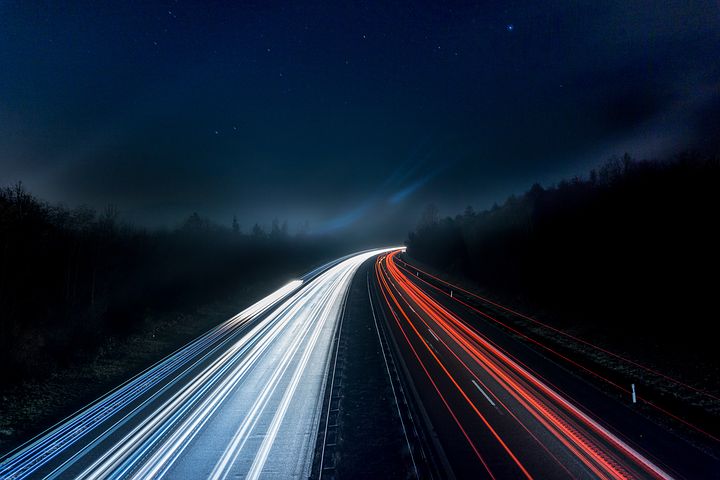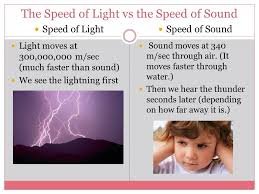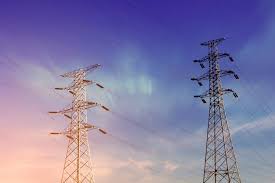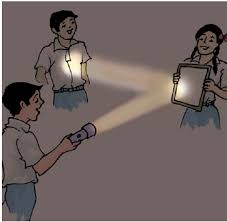WHY WE CAN'T GO FASTER THAN THE SPEED OF LIGHT.
Hello steemians and welcome again to my blog.Now, for those of us in the science community, particularly in the physics circle, it is commonplace knowledge that the very first "rule of traffic" in the universe is that nothing travels faster than the speed of light. This traffic law so to speak, is borne out of and strengthened by Albert Einstein's Theoy of Special Relativity, which establishes among others things, that light travels at a constant speed, regardless of how fast an observer may be travelling and hence, nothing in the universe can go faster than it.-[On The Aerodynamics of Moving Objects]
Consequent upon the foregoing, are following vital question worth exploring. First, why is it such a big deal to say that nothing can go or has ever gone swifter than the speed of light? Second, are we really sure that nothing can? And are there any reasons, anyone would want to travel faster than light? Below, i shall subsequently provide answers to the above questions. But for now, let us attempt to gain a richer understanding of that phenomenon called light.
In very simple term, you can think of the light to mean visible light, which is perceivable by the human eye and is responsible for sight. But more than that, light is an electromagnetic radiation, which exist within some parts of the electromagnetic spectrum.
Light is made up of particles known as PHOTONS. And photons in a vacuum are massless(zero mass), both at a state of rest and at top speed of light. This is why light is the only phenomenon in the universe that travel at the speed of approximately 300,000 mp/s.[metre per second]. Photons are emitted from light sources such the sun and light bulbs. They can be both created and destroyed. And they do not have a fixed number.
These building blocks of light are so special that owing to their zero mass nature, at rest, which is equal to zero mp/s, they can instantenously zoom off into a speed of 67 million mp/h[metre per hour]. Fast and furious you might wanna say. One could even begin to wonder what kind of force accelerates photons(light) to such an incredible speed from rest. The answer is the fact that when photons are "born" they already possess a free reign of speed of light. So they don't have to accelerate more or less.
There's a wide range of what and what can amount to light and it's building blocks. All things from radio waves to microwaves to x-rays to ultraviolet rays as well as gamma rays emitted from decaying atoms, are all made up of one and the same particle-photon. Together, these rays constitutes the electromagnetic spectrum. With the only difference being their energy and wavelength. For instance, the fact that radio waves travels at light speed is a wonderful development in communication for the transmission of signals and messages through telephone, television and radio.
However, below, we shall be examining a couple of natural phenomena to see if there's any that goes faster than light.
Light or sound, which do you reckon travel faster? Of course, it is light. Light travels so many times faster than sound. For instance, while sound travels through air at the speed of 340 mp/s. Light on the contrary, moves through in a vacuum at the speed of 300,000 km/s. Which is a whopping 900,000 times faster than the speed of sound. To better understand this, quickly take your mind back to the last time you witnessed a thunderstorm. Which got to your senses first? The lightening or the thunder? Of course, we all see the flash from the lightening first, then the attendant sound comes in, usually several seconds after.
Electricity and light are both forms of electromagnetic radiation[ER] and all ER travel at the speed of light-300,000 mp/s.Now,does the preceding make the speed of electricity equal to or faster than that of light? Answer is an outright no. Electricity travels almost as swiftly as light, but not quite, regardless of being a form ER. Now, the reason for speed lag in electricity, as opposed to light is, while the latter is massless, the former possesses weight, caused by streams of electrons flowing through the wires and constantly bumping into on-coming atoms inside the wire, resulting in the deceleration of speed of electricity. Long story short then, light travels approximately 99 times faster than electricity.
It is only in a free-fall that an object experience pure acceleration due to gravity. Where 'free-fall' implie a fall that doesn't experience what is known as AERODYNAMIC DRAG-[air resistance], such as in a vacuum. While on the flip side of that is the notion that heavier objects fall faster through space than lighter ones.
Now, considering both preceding ideas above, the question "does falling objects travel faster than light?" follows immediately. The answer again is no. Whether in a Vacuum-[free-fall] or through aerodynamics drag, light always travels faster than falling objects, because of its absence of mass and constant speed. For example, between a flash of light and a coin released vertically and simultaneously, the light will definitely hit the floor first, before the coin.
Again, does the speed of light that is deflected off the path it was travelling, get decelerated? That is slowed down? Once again, no. Why? Because, as noted earlier, the speed of remains constant. What would happens in this scenario is a change in the direction in the pathway the light is travelling. A process known as reflection in physics. Hence, the of light doesn't get slowed by deflection.
Neutrinos are subatomic elementary particles that are produced from the decay of radioactive elements. They lack electric charge, are nearly massless and as result travel at light speed.
But why are we interested in these smaller-than-atom entities in the first place? In September 2011, physicist Antonio Ereditato, with a team of 160 scientists working on the OPERA particle acceleration project, shocked the world, when they claimed that NEUTRINOS had travelled faster than light. That from CERN near Geneva in Switzerland, neutrinos arrived the detector in Italy 60 nanosecond earlier than light could have done. This announcement threatened Einstein's special relativity theory to its very foundations.
However, it turns out that the SCIENTISTS WERE WRONG THIS TIME. A timing problem had been caused by a poorly connected fiber optic cable, which should have been transmitting accurate signals from GPS satellites.This resulted in a delay. And consequently, the measurement of time it took neutrinos from Switzerland to Italy were off by approximately 73 nanoseconds, thereby, making it look like the particle-[neutrinos] had whizzed along faster than light have ever done.
1.EINSTEIN'S THEORY OF SPECIAL RELATIVITY: This is theory that holds in essence that nothing can go swifter that speed of light. Although this century long theory was almost "embarrassed" by the announcement of the OPERA project. But it stood it's ground. The eventual flaw of the experiment showed that nothing can as yet beat the universal speed limit of light. Not even near massless particles called neutrinos.
2.THE FASTER, THE HEAVIER: "as objects travel faster and faster, they get heavier and heavier.And the heavier they get, the harder it is to achieve acceleration, so they never get to the speed of light."Those are the words of Roger Rassool, a physicist at the University of Melbourne, Australia. The import from it is that, most objects in nature possess mass, which makes them more massive, the faster they travel.
While on flipside of that, photons-[the building blocks of light] are free, without mass, in a vacuum, and as a result, are always at top speed, once they are "born".
3.SPEED OF LIGHT IS CONSTANT: From Einstein, we derive the theory that speed of light is constant, in a vacuum. So that no matter how fast you are going, speed of light is always the same. For our purpose here, that will further leads us to the notion which posits that byTIME TRAVEL SLOWER FOR THOSE TRAVELLING IN FAST MOVING VEHICLES. Especially, for me, you and a spacecraft for example that has mass. But definitely not for the massless light. Typical example of slow timing for fast movers, is the fact that time runs 0.007 slower for astronauts on the International Space Station-[ISS] moving at 7.66km/s, relative to earth, compared to people living on the planet.The phenomenon is referred to as time dilation.
4.SUB-ATOMIC PARTICLE ACCELERATION. Again, it is possible to attempt getting something to break the natural speed limits of light. Simply by supplying more and more energy to accelerate particles, in a particle acceleration plant. But as William Bertozzi of Massachusetts Institute of Technology, found out in the 1960s, from his experiment, that addition of extra energy to the particle accelerator did not cause a directly proportional increase in electron speed. Instead, he used more and more additional energy to achieve even smaller and smaller difference to the speed of the electrons. So, they got close to the speed of light. But never quite reached it.
Therefore judging for all the reasons adduced above and even more. It is safe to conclude that Einstein's theory of special relativity is still intact and unharmed. It is safe to say, that if anything or anyone can go faster than the speed of light, then they would be disobeying the fundamental laws of physics that describes how our universe works.
So light speed continues to reign supreme in our universe. At least, until when it is "dethroned" But for now, going by the way Steven Kolthammer, an experimental physicist, at the University of Oxford, in the UK, submits it, "If we are able to send signals faster than light, then we can as well construct paradoxes, under which information can somehow go back in time. And as far as we know, this is not yet a possibility.
So I round up by positing that faster-than-light travel, at the moment, is still only a fantasy.
But question for another day would likely be, why would anyone want to travel faster than light? Supersonic speed is good as well as safe enough. Except such one has an appointment with the ultimate call. Lol. Stay safe and enjoy.
If you like what you have just read, kindly
*UPVOTE
*RESTEEM
*FOLLOW
1.https:physics.com/question/1557/accelerating-particles-speed-infinitesimally-close-to-the-speed-of-the-light
2.https://www.newscientist.com/article/dn21510-was-speeding-neutrinos-claim-a-human-error
3.https://www.org/newshour/science/what-is-a-neutrinos-and-why-should-anyone-but-a-particle-physicist-care
4.https:bbc.com/earth/story20160429-the-real-reasons-nothing-can-ever-go-faster-than-light
5.www.dummies.com/education/science/physics/einsteins-special-relativity
6.https://niobiumj12.imascientist.org.uk/2016/27/how-fast-is-the speed-of-light-compared-to-the speed-of-sound
7.https://www.energy.gov/articles/how-particle-accelerator-work
8.https://gravityandlevity.wordpress.com2009/04/08why-i-cant-go-faster-than-speed-of-light-hints-from-aerodynamics/amp/
9.https://physics.info/falling/

.jpg)

.jpg)
.jpg)
.jpg)
.jpg)
.jpg)
Congratulations @lyndave! You have completed some achievement on Steemit and have been rewarded with new badge(s) :
Click on any badge to view your own Board of Honor on SteemitBoard.
For more information about SteemitBoard, click here
If you no longer want to receive notifications, reply to this comment with the word
STOPUpvoted on behalf of @thehumanbot and it's allies. Write less but write great original content, and do not use bid bots for at least 1-2 days, for your post to be recommended to other curators. If you are using any image or video, cite proper source. Even if its your own image or video, it's worth mention the same. Also be careful to avoid duplicate posting.
Great Original Works are rewarded by top Curators, refer posts from my Step-Brother @humanbot for more details.If you like this initiative, you can follow me in SteemAuto and upvote the posts, that I upvote.
And remember to do some charity when you are rich by contributing to me. Check out my Introduction Post for more details. If you have any concerns or feedback with my way of operation, raise it with @sanmi , my operator who is freaking in Steemit chat or discord most of the time.